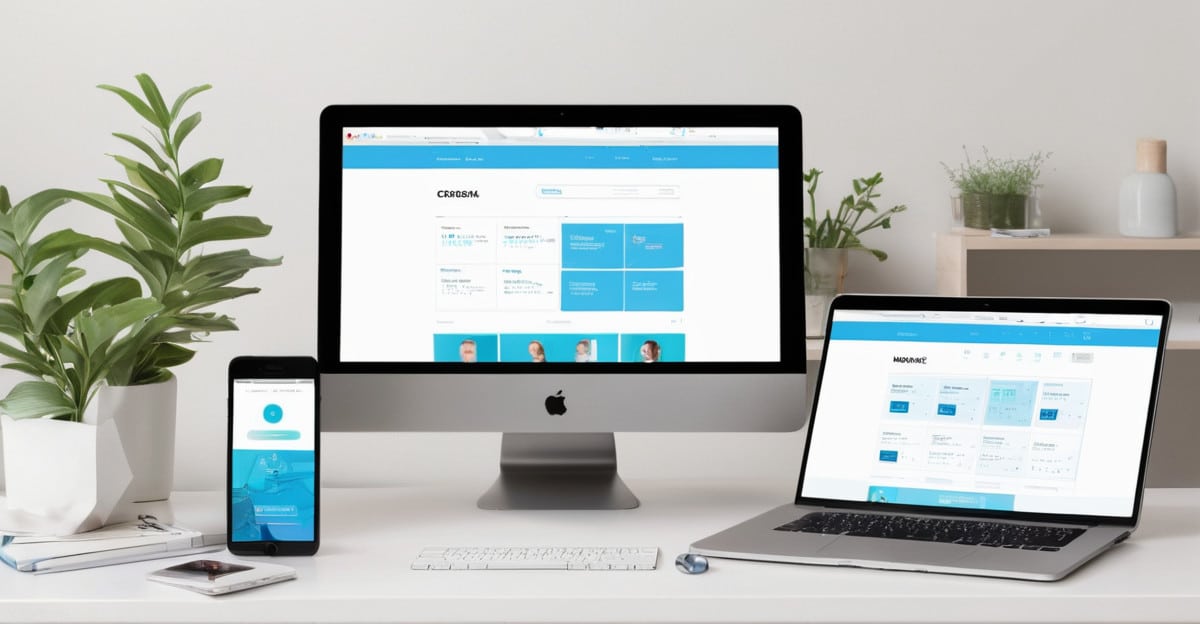Introduction
Your online business card is your freelance portfolio website. A visually appealing and well-optimized portfolio is more crucial than ever in 2024. In a congested market, you may stand out and draw in more customers with the appropriate tactics. We’ll look at the top 10 suggestions for improving your freelancing portfolio website in 2024 in this post.
Key Takeaways
- Learn how to optimize your freelance portfolio website for 2024.
- Discover actionable tips to attract more clients and boost your online presence.
- Understand the importance of SEO, visual appeal, and user experience.
- Stay ahead of the competition with these expert tips.

1. Optimize for Mobile Devices
Mobile optimization will be essential in 2024. Because more people are using smartphones and tablets to access the internet, your freelancing portfolio website needs to be responsive. Make sure your website is responsive, which means it can fit on any screen size without sacrificing usability.
To assess how well your website functions on mobile devices, use resources like Google’s Mobile-Friendly Test. Be mindful of load times, button locations, and text sizes. You can keep prospective customers interested and drastically lower your bounce rate with a seamless mobile experience.
2. Showcase Your Best Work
Your best work should be showcased in your portfolio. It’s important to prioritize quality over quantity. Choose assignments that highlight your abilities and adaptability. A concise synopsis, the difficulties encountered, and your solution should be included with every assignment. Employ top-notch pictures and, if appropriate, videos to give your work a visual representation.
Think about adding a section specifically for case studies. This gives prospective customers an idea of your level of experience and the kind of outcomes you can provide. Always keep in mind that your portfolio serves as an indicator of your skills, therefore make every project matter.

3. Use Clear and Concise Language
It’s crucial to use language that is clear and simple when expressing your value. Steer clear of jargon and extremely technical terminology that could confuse prospective customers. Rather, speak in plain, understandable words. Your objective is to effectively communicate your abilities and expertise to your audience.
Make your writing more readable and clear by editing it. To divide up content and make it easier to read, use headings, bullet points, and brief paragraphs. A polished portfolio enhances your professional image and facilitates productive communication with possible clients.
4. Incorporate SEO Best Practices
Search engine optimization (SEO) is essential to increasing the online discoverability of your portfolio. To begin, find out which terms prospective customers are using to find services similar to yours by doing keyword research. Include these keywords in headings, titles, and meta descriptions on your website in a natural way.
Make sure your website loads quickly, employ internal and external links, and optimize your photos using alt text. To keep your information current and interesting, update it frequently. You may raise your portfolio’s organic traffic and search engine ranks by adhering to SEO best practices.
5. Highlight Client Testimonials and Reviews
Testimonials and evaluations from clients are effective means of establishing credibility and trust. On your portfolio website, provide a part devoted to displaying gratifying testimonials from previous customers. Genuine testimonies serve as social evidence and have a big impact on the decisions made by prospective customers.
To increase authenticity, if at all possible, offer the client’s full name and photo. Testimonials on video can be much more persuasive. Invite pleased customers to provide reviews on Google My Business or LinkedIn, then provide a link to these evaluations from your portfolio.

6. Ensure Fast Load Times
Speed of a website is important for both SEO and user experience. A website that loads slowly may irritate users to the point that they abandon your work before seeing it through. To evaluate the functionality of your website and pinpoint areas for development, use tools such as Google PageSpeed Insights.
To improve load times, reduce code, take advantage of browser caching, and optimize graphics. To distribute your material more effectively, think about utilizing a content delivery network (CDN). Quick load times can enhance user interaction and raise your search engine ranking.
7. Create a Strong About Page
You have the chance to establish a personal connection with potential customers through your About page. Tell us about yourself, your upbringing, and your motivations. Stress your qualifications, experience, and unique selling points to potential clients. Strive to come across as personable and approachable.
Add a professional photo, and think about starting with a little movie. Make it simple for visitors to grasp your identity and the services you provide. Potential customers will find you more relatable and reliable if you have an engaging About page.
8. Make Contacting You Easy
Make it difficult for prospective customers to locate your contact details. Provide a contact form on your website to make it simple for them to get in contact with you. Make sure your phone number and email address are easily accessible. Provide links to your profiles if you utilize social media for commercial purposes.
Think about including a live chat option for quick questions. Clients are more likely to get in touch with you if it’s simple for them to do so. More enquiries and, eventually, more business prospects can result from an efficient contact process.
9. Keep Your Portfolio Updated
Maintaining an updated portfolio is crucial to presenting your most recent work and abilities. As soon as you finish new projects, instantly add them to your portfolio. This maintains your website current and appealing, showing prospective customers that you are a business that is dynamic and always evolving.
To keep your portfolio short and concentrated on your greatest work, remove items that are out of date or not as good. Maintaining a current portfolio shows off your skills and keeps you competitive in the dynamic freelance industry.
10. Leverage Social Proof and Networking
Developing a solid network can help your independent contractor business. Make use of social evidence by exhibiting partnerships with respectable companies or experts in your field. Put references or logos of these partnerships on your website. Connect with other freelancers and possible clients by joining relevant online communities and forums.
To raise your profile, think about doing webinars or guest blogging. Referrals and worthwhile opportunities can arise from networking. You may increase the number of clients in your portfolio and broaden your reach by being actively involved in your professional community.
Conclusion
In 2024, gaining clients requires optimizing your freelance portfolio website. You can show off your knowledge, improve user experience, and establish your online profile by implementing these ten best practices. Don’t forget to use SEO best practices, update your portfolio frequently, and make it simple for prospective clients to get in touch with you. You can successfully expand your freelance business and make a name for yourself in a crowded industry with a well-designed portfolio.






